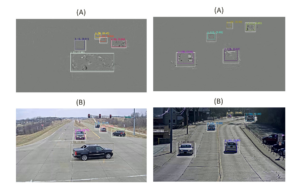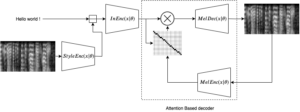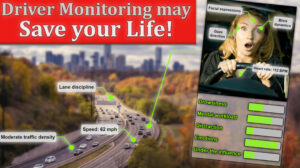
When artificial intelligence meets image compression, privacy-friendly video surveillance becomes possible


Noé Tits, after graduating as Electrical Engineer, he pursued a PhD at Numediart Institute – UMONS on the application of Machine Learning techniques for expressive speech synthesis.
Currently, he takes care of the R&D of Flowchase’s speech technology to automatically analyze and provide feedback to English learners on their pronunciation using Machine/Deep Learning and Signal Processing paradigms. Flowchase is a mobile app that allows you to boost your pronunciation in English thanks to voice technology.
During 2020, he studied the controllability of an Expressive Text-to-Speech system trained on a dataset for a continuous control. By controllability, we mean the capacity of modifying at will the expressiveness of the synthesized speech thanks to parameters.
Controllability is evaluated with both an objective and a subjective experiment. The objective assessment is based on a measure of correlation between acoustic features and a latent representation of expressiveness. The subjective assessment is based on a perceptual experiment in which users are shown a 2D interface for Controllable Expressive Text-to-Speech and asked to retrieve a synthetic utterance by exploring it. To consult his work: https://www.mdpi.com/2227-9709/8/4/84/htm
Furthermore, according to Noé Tits, to be able to interact properly with intelligent systems, one major challenge is to make this interaction as intuitive and natural as possible for users.
When working with vocal interaction, this corresponds to synthesizing a natural voice with an expressiveness consistent with the context. The different possibilities in this area would be interesting for, e.g., the development of virtual characters with expressive voices, for animation movies, synthetic audiobooks…

Anaïs Halin graduated from the University of Liège (ULiège) in 2017 with a master’s degree in Electrical Engineering and from HEC Liège in 2020 with a master’s degree in Management, has been since 2017 a PhD student in the Electrical Engineering Computer Science department of ULiège.
This young doctoral student affiliated with TRAIL, works in the fields of driver monitoring and driving automation. She has recently published an article (https://www.mdpi.com/1424-8220/21/16/5558) and made a video on the subject (https://youtu.be/d9IKIvrwlVQ). She explains, among others, how to characterize the state of drivers using indicators and sensors, as well as the joint role of driver monitoring and driving automation. The notion of indicators, which she introduced and rigorously defined, is an enabler towards explainability of systems.
Thanks to Artificial Intelligence, we can dream of one day having a fully autonomous car which would dramatically improve road safety, reduce congestion, lower emissions, and make traveling more comfortable.
But until we overcome the technological and regulatory challenges that stand between us and that potential future, we need, according to Anaïs Halin, to develop driver monitoring systems tailored to each level of driving automation. This work must be done to ensure that drivers are able to drive or regain control safely, and, if necessary, to issue alarms, or to delegate some or all of the driving task to the automation.

For two intensive weeks, several researchers gathered at the Maison Cocagne to participate in the TRAIL WORKSHOP PARIS 2021. Initiated by the TRAIL Institute (trusted AI Labs) aim at establishing a tradition of collaborative R&D work by gathering, in a single place, a group of senior project leaders, researchers and students, working together in order to collaborate on 8 major challenges for Wallonia using artificial intelligence.
This workshop was supported by Service public de Wallonie – Recherche under grant n°2010235 « ARIAC BY DIGITALWALLONIA4.AI » and by Wallonie-Bruxelles International.